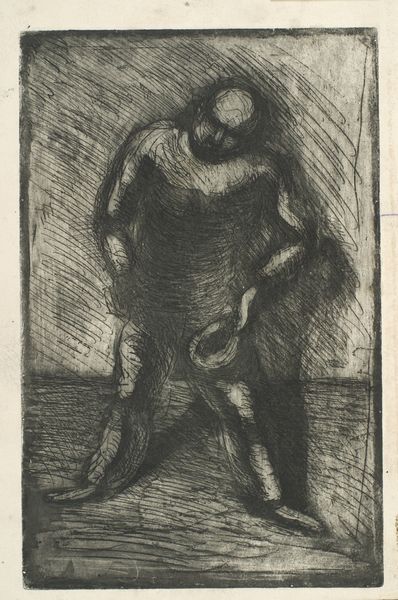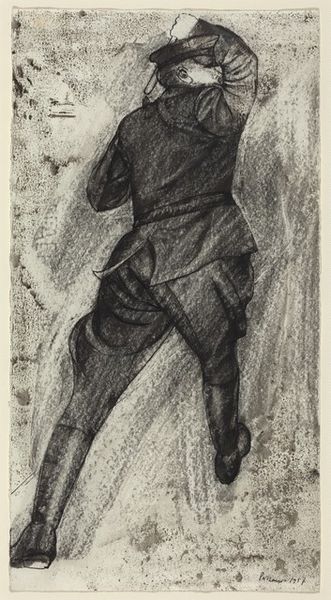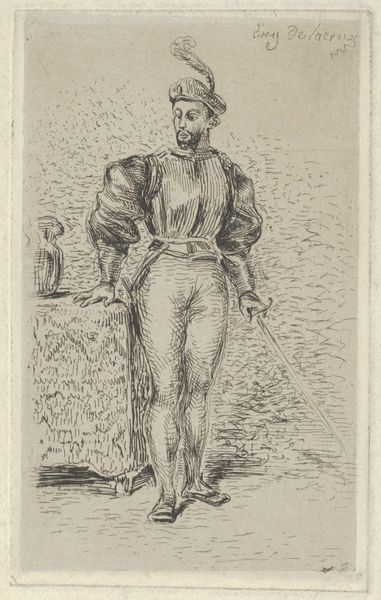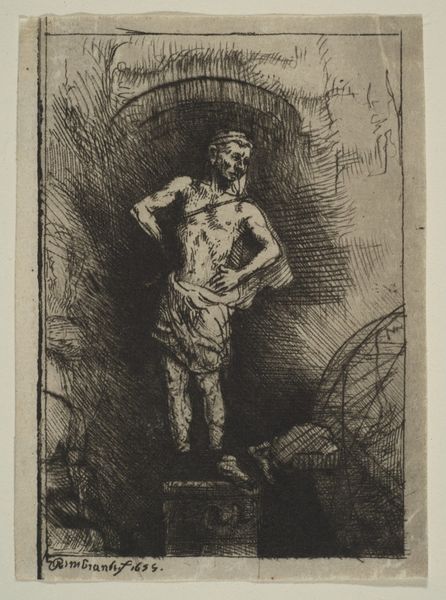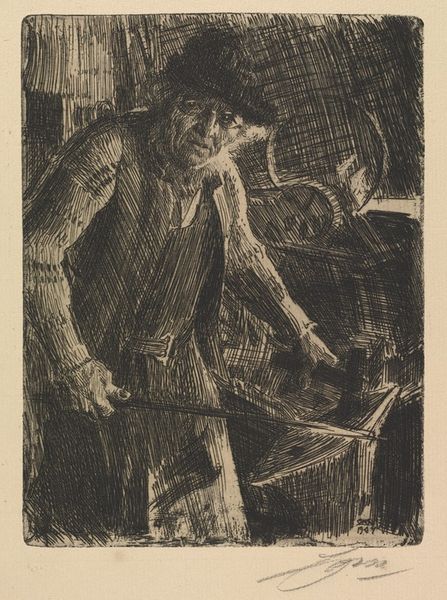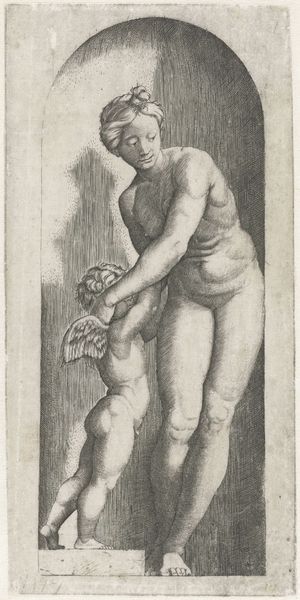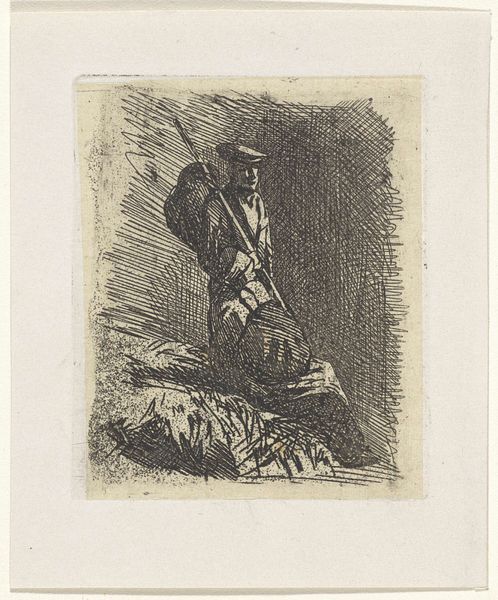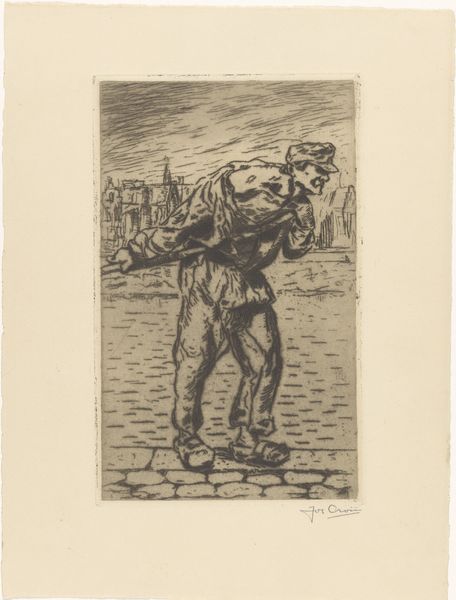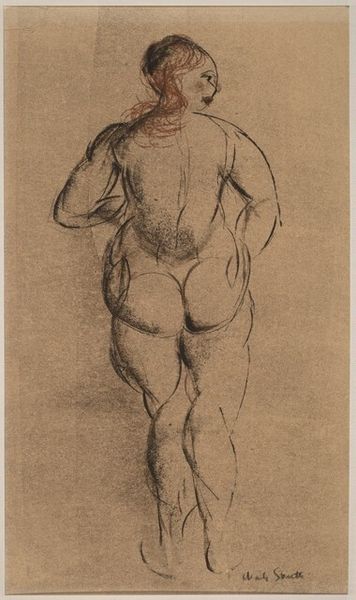
print, etching
# print
#
etching
#
figuration
#
history-painting
#
realism
Dimensions: 258 mm (height) x 169 mm (width) (plademaal)
Curator: Vilhelm Lundstrom's "Striding Man with Hat in Hand," created between 1920 and 1923, an etching now residing at the SMK. It’s a stark image rendered with visible intensity, wouldn’t you agree? Editor: It feels… vulnerable, almost painful. The hunched posture, the hat clutched like a lifeline. There's an undeniable weight pressing down on him, physically and perhaps emotionally. Curator: The social context is important. Consider the aftermath of World War I. This was a period of profound disillusionment, and Lundstrom, though often associated with more vibrant, cubist-influenced styles, captures that weary spirit so effectively here. Editor: Cubist influences, really? I see hints of it, the reduction of form to near-geometric abstraction, especially in the treatment of his torso. But the emotional weight overpowers any formal concerns, I think. It’s a figure stripped bare, humbled. And the rough lines, they add to the urgency of it all. Curator: Exactly! The etching medium, with its potential for fine detail but also raw immediacy, serves him perfectly. Think about the distribution and the limited exposure that art faced in the Post-War society: what purpose did art had? Editor: Makes you wonder who this man is. Is he defeated, begging, contemplative? And the setting—so undefined. Is it urban blight or emotional desolation he is immersed into? There's a beautiful tension between the subject and what remains deliberately unsaid. A sense of open questions on how the population handled defeat. Curator: Lundstrom frequently reduced figures to archetypes or generalized states of being. It’s not necessarily about a specific narrative, but more a commentary on the universal human experience under duress in 1920's Europe. Editor: He makes that universal human experience palpable. I won’t soon forget this etching. Such simple lines evoking such depth. The hat becomes the key. Curator: I hope our listeners were captivated. We need art like this to constantly push dialogues on art history. It forces us to look inwards and outwards.
Comments
No comments
Be the first to comment and join the conversation on the ultimate creative platform.
